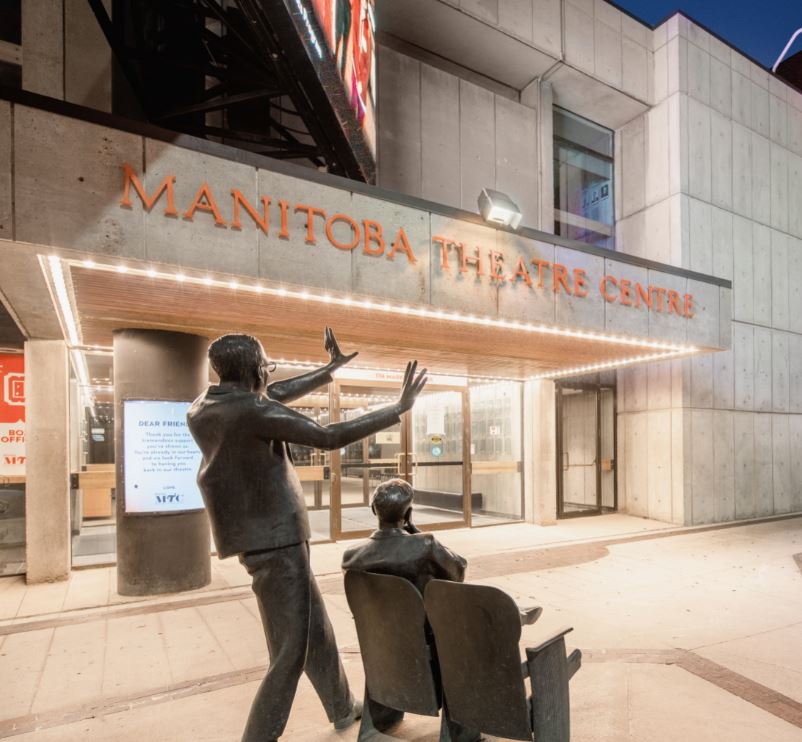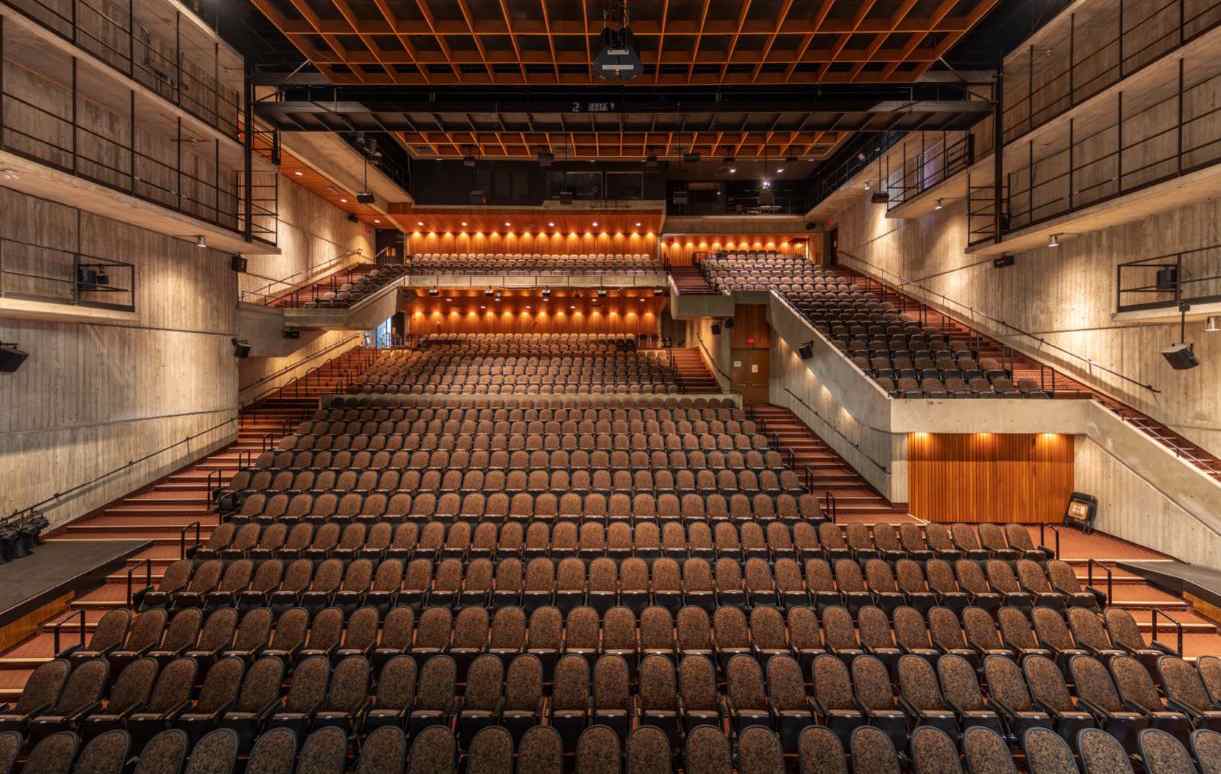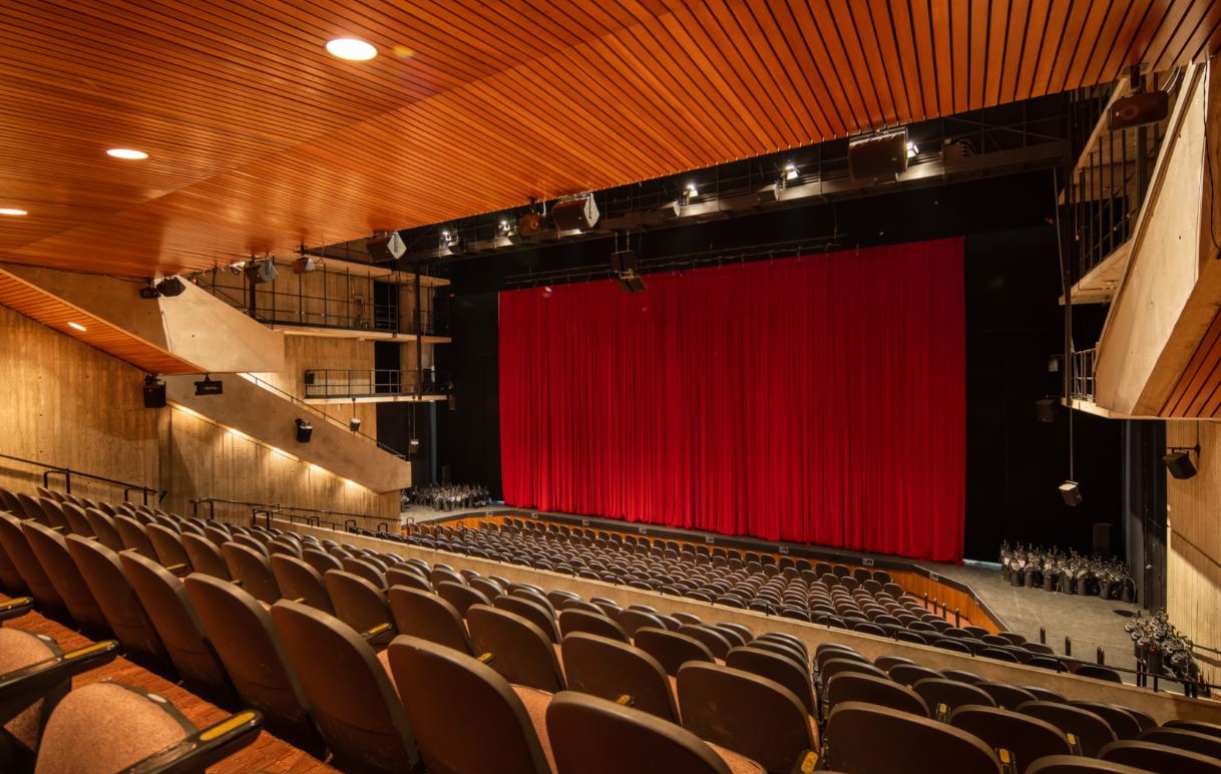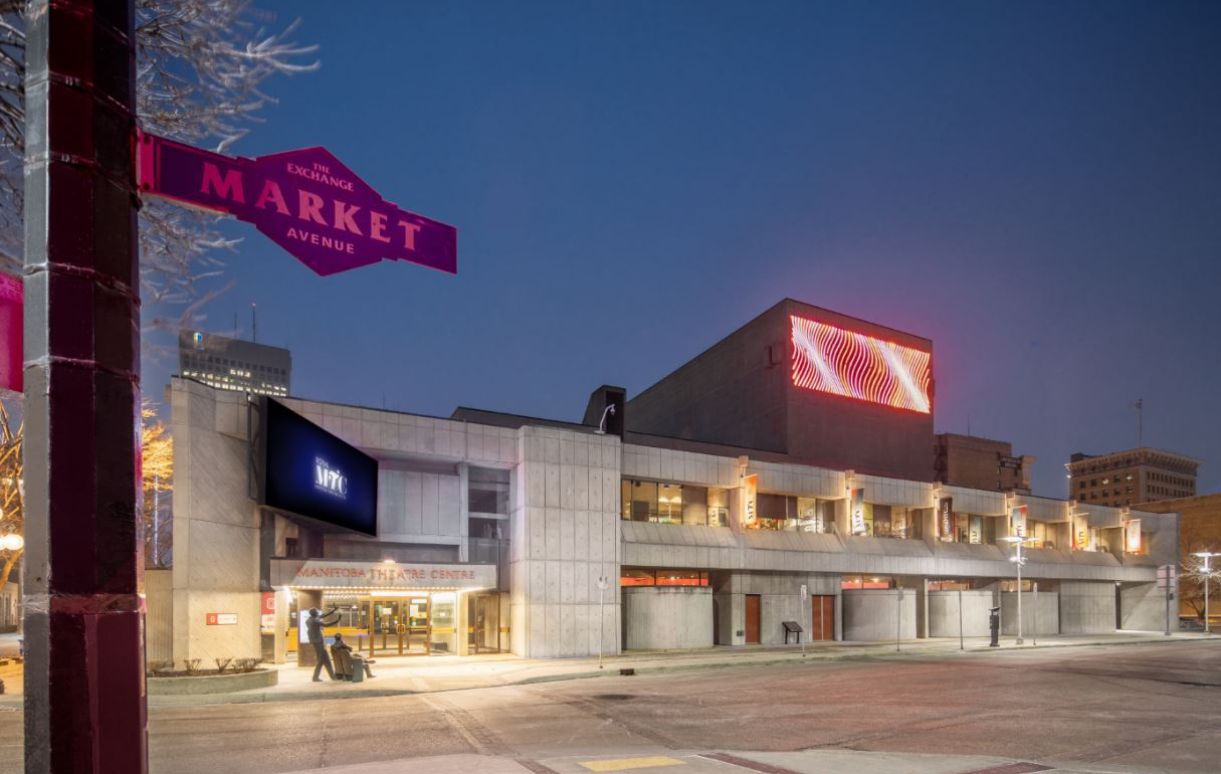Royal Manitoba Theatre Centre National Historic Site

© Jerry Grajewski / courtesy of the Royal Manitoba Theatre Centre
The Royal Manitoba Theatre Centre was designated a national historic site in 2009.
Commemorative plaque: 174 Market Avenue, Winnipeg, ManitobaFootnote1
In 1970, this structure was built to house the Manitoba Theatre Centre, a group founded in 1958 that has made a significant and lasting contribution to the development of regional theatre. Inside, the innovative use of space and light in the foyer, auditorium, and backstage areas creates an intimate atmosphere and supports artistic and technical collaboration, promoting a strong relationship between actors, staff, and audience. With its exposed structure and asymmetrical design, massive and sculptural forms, and textured concrete walls, the building is an exceptionally fine example of small-scale Brutalist architecture in Canada.
Description of historic place
Royal Manitoba Theatre Centre National Historic Site of Canada is located in downtown Winnipeg, Manitoba, within Exchange District National Historic Site of Canada. The site consists of a Brutalist structure, which features exposed reinforced concrete and substantial massing. It was built between 1969 and 1970 as part of an urban renewal project to create a complex of modern public buildings in downtown Winnipeg. It was also constructed to house the Royal Manitoba Theatre Centre’s regional theatre group, which was established in 1958. Official recognition refers to legal lots 2, 3 and 4.

© Jerry Grajewski / courtesy of the Royal Manitoba Theatre Centre

© Jerry Grajewski / courtesy of the Royal Manitoba Theatre Centre
Heritage value
Royal Manitoba Theatre Centre was designated a national historic site of Canada in 2009 because: it is an excellent expression of small-scale Brutalist architecture in Canada in its poured concrete forms, solid massing, interior layout and exposed structure; it is an exceptional theatre building because it creates an intimate atmosphere in the auditorium and foyer for its patrons, and encourages, through its architecture, a stronger relationship between audience and actor by allowing theatregoers to observe stage activity behind the curtain and sense the players' anticipation of the performance; it is associated with the Manitoba Theatre Centre group, which was judged to be a model regional theatre by the Canada Council for the Arts, and played an important role in popularizing the regional theatre movement in Canada.

© Jerry Grajewski / courtesy of the Royal Manitoba Theatre Centre
The opening of the Royal Manitoba Theatre Centre building in November 1970 concluded a long tradition of theatre building in Winnipeg. As part of a cultural renaissance of the city’s arts facilities in the 1960s, the Royal Manitoba Theatre Centre building housed Canada’s first professional regional theatre group. At a time when large modern theatres and concert halls were opening up across the country, the MTC was designed as an intimate space that permitted a close relationship between audience and actor. In addition, the Royal Manitoba Theatre Centre was the country’s first large regional theatre group with educational programming and shows touring throughout rural Manitoba. The newly founded Canada Council funded the theatre and promoted it as the exemplary model of how to create a successful regional theatre.
The Royal Manitoba Theatre Centre is also an excellent expression of small-scale Brutalist architecture in Canada. The buildings sculptural form of exposed reinforced concrete, undressed formwork and solid massing are key features of the style. The east and north façades of the building feature sculptural double-height angled windows, designed to allow natural light into the public foyer. In addition, the north side of the building is punctuated by four semi-circular concrete projections on the ground floor. There is an overall informality and asymmetry to the building that is characteristic of small-scale Brutalism.
Equally important is the Royal Manitoba Theatre Centre’s interior space. At a time when Brutalist architecture was being well received publicly as modern design, the Royal Manitoba Theatre Centre building introduced a new concept of intimate Brutalist architecture. Rather than a formal event space, the architects and theatre director worked together to create a space that bridged the separation between the actors’ and the audience. The theatre’s asymmetrical seating arrangement, flexible stage design including a proscenium and "thrust stage," and foyer, are good representative examples of this concept. The scenery preparation room behind the stage is also open to viewing by theatregoers through a window, allowing a glimpse behind the stage and furthering the intimate theatre experience.
Source: Historic Sites and Monuments Board of Canada, Minutes, June 2008.
The National Program of Historical Commemoration relies on the participation of Canadians in the identification of places, events and persons of national historic significance. Any member of the public can nominate a topic for consideration by the Historic Sites and Monuments Board of Canada.
- Date modified :